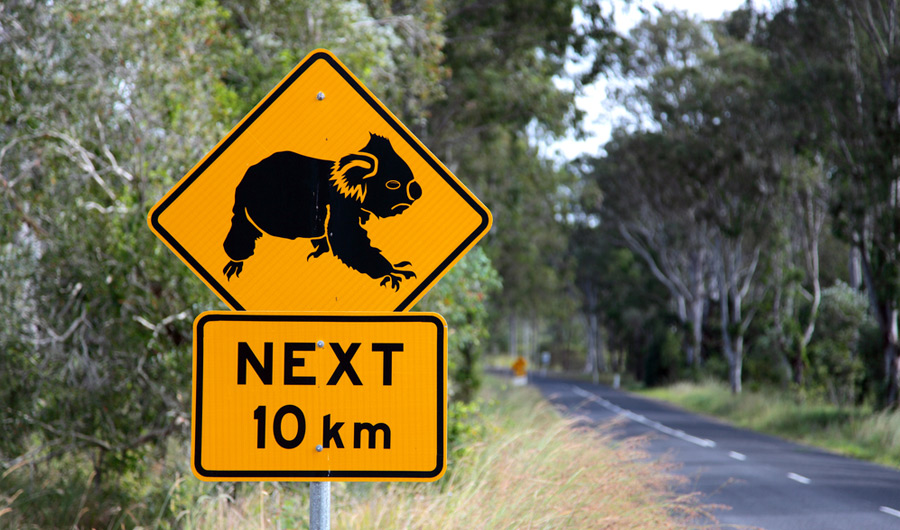Daylight Saving Time Could Benefit Animals

(Inside Science) -- In a few short months, daylight saving time will return, allowing many commuters to return home from work before darkness falls. Many Americans will complain about pushing the clocks forward one hour, but doing so may benefit wildlife, a new study shows. Extending daylight into the evening hours might help wildlife species that become active at night, and could save lives -- both animal and human.
In much of North America and Europe, daylight saving time runs from spring through the end of October and results in longer evenings illuminated by the sun. The change was originally intended to conserve electricity (although nowadays, research shows it actually increases energy consumption, as people run air conditioners later in the evening). The perennial time change remains controversial around the world, said Robbie S. Wilson, a biologist at the University of Queensland in Australia.
Queensland is one of several states, provinces or countries around the world that don’t participate in daylight saving time, Wilson said. The province is often under political pressure to join the rest of the country in changing the clocks, and is frequently the butt of jokes as a result. Australians joke that Queenslanders who live in the province’s vast rural areas are worried the cows will become confused and unmilkable, for instance, or that daylight saving time will cause the curtains to fade.
Wilson said it occurred to him and his colleagues that such a time change could benefit animals.
“The fact that we don’t have [DST] made us think differently about it,” he said.
Wilson studies animal ecology and movement, including migration and habitat changes, and his research includes nocturnal animals like koalas and kangaroos. Koala populations in western Queensland have been decimated in the past few decades, thanks to a trifecta of threats from disease, dogs and vehicle accidents. Officials have invested millions of dollars in several strategies to protect the animals, from road signs warning motorists of koala habitats to wildlife tunnels and bridges that let the koalas avoid busy roadways.
Wilson said he and his colleagues wondered how observing daylight saving time might change things.
“Just a quick thought experiment made it clear that most of the traffic would be off the roads by the time the koalas were out,” he said.
Working with colleagues from the Koala Research Centre of Central Queensland, Kyoto University in Japan and other institutions, Wilson obtained traffic density data from the Queensland government, as well as koala data from fellow biologists. They correlated information about animal-vehicle collisions with the time of day, and in a computer simulation, they shifted the traffic pattern by one hour. They found that daytime light later in the evening would result in an 8 percent drop in animal-vehicle collisions during the week, and a 10 percent drop on weekends.
“During the times of year when there was a lot of light, there were fewer incidents. During the times of year when there was more darkness, in winter, which would mean more people driving around at night, is when you would get more incidents with cars and wildlife,” Wilson said.
The study, which is published in the journal Biology Letters, is a creative way to think about human-wildlife interactions, said Travis Longcore, an environmental scientist at the University of Southern California in Los Angeles who studies how human landscape changes affect animals.
“I don’t like daylight saving time myself, so I’m biased. I kind of just detest it,” he said. “But on the wildlife side, this is creative and interesting. The daily timing of human activities could have wildlife impacts depending on how it intersected with their daily timing.”
Longcore noted that while shifting commuting patterns could help some species that become more active at twilight or at night, it might be detrimental to those that are active during daylight hours. Further research will have to address this question in other species, Wilson acknowledged.
It’s unclear whether the strategy would work in the U.S., where most states observe daylight saving time. But anecdotal evidence from several state wildlife agencies suggests that an evening commute in the dark is more dangerous for people and animals. In Colorado, wildlife officials say November sees more car accidents involving wildlife than any other month, in part because daylight saving time shifts peak commuting times to times when deer are more active. In Pennsylvania, the state’s Game Commission warns motorists to pay closer attention after daylight saving time ends.
Deer and other large species are much more dangerous for humans than koalas, as Wilson pointed out; the small marsupials are no match for a speeding vehicle, while a deer collision can be deadly for the deer and people in the vehicle. But Queensland also has copious kangaroos, which are also active at night. Shifting traffic patterns to avoid them could not only benefit those animals, but also safeguard human lives.
It would be much simpler if we could encourage the wildlife to change their habits, Longcore and Wilson said. But without that option, shifting our schedules is an alternative solution.
“Very rarely is there an opportunity to shift human activity patterns across the board,” Longcore said. “But changing the clock is one of them.”

